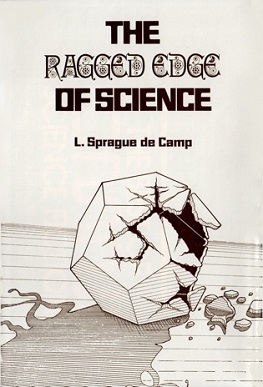The Ragged Edge of Science
The Ragged Edge of Science is an exploration into the fringes of science and pseudoscience, where the boundaries of scientific research and the exploration of unexplained phenomena blur. This concept delves into areas that are often considered controversial or outside the mainstream scientific community, including paranormal activities, cryptozoology, and UFOs. The term suggests a threshold where established science meets the speculative, unverified, and often unverifiable claims.
Overview[edit | edit source]
The Ragged Edge of Science examines the tension between skepticism and open-mindedness in the scientific community. It addresses how scientists and researchers approach subjects that are not easily quantifiable or reproducible by conventional scientific methods. This exploration is significant in understanding how science progresses, incorporates new information, and how it delineates between credible science and pseudoscience.
Key Areas[edit | edit source]
Paranormal activities: Investigates phenomena that are beyond the scope of normal scientific understanding, such as ghosts, ESP (Extra-Sensory Perception), and telekinesis.
Cryptozoology: The search for and study of animals whose existence is not substantiated by mainstream science, such as Bigfoot, the Loch Ness Monster, and other cryptids.
UFOs (Unidentified Flying Objects): The study of unidentified flying objects, which has both a scientific and a speculative component, often linked to theories of extraterrestrial life.
Challenges[edit | edit source]
One of the primary challenges at the ragged edge of science is maintaining scientific integrity while exploring phenomena that defy easy explanation. Researchers must navigate the fine line between open-minded inquiry and the rigorous demands of the scientific method. This includes peer review, reproducibility of results, and empirical evidence.
Public Perception[edit | edit source]
Public interest in the ragged edge of science is high, fueled by popular media, including television programs, books, and movies. However, this interest often comes with a lack of critical thinking and skepticism, leading to the spread of misinformation and the blurring of lines between science and pseudoscience.
Conclusion[edit | edit source]
The Ragged Edge of Science represents a fascinating and controversial area of inquiry. It challenges the scientific community to expand its boundaries while maintaining the rigorous standards that define scientific inquiry. As science continues to evolve, the exploration of these fringe areas may provide new insights and understanding of the world.
Search WikiMD
Ad.Tired of being Overweight? Try W8MD's physician weight loss program.
Semaglutide (Ozempic / Wegovy and Tirzepatide (Mounjaro / Zepbound) available.
Advertise on WikiMD
|
WikiMD's Wellness Encyclopedia |
| Let Food Be Thy Medicine Medicine Thy Food - Hippocrates |
Translate this page: - East Asian
中文,
日本,
한국어,
South Asian
हिन्दी,
தமிழ்,
తెలుగు,
Urdu,
ಕನ್ನಡ,
Southeast Asian
Indonesian,
Vietnamese,
Thai,
မြန်မာဘာသာ,
বাংলা
European
español,
Deutsch,
français,
Greek,
português do Brasil,
polski,
română,
русский,
Nederlands,
norsk,
svenska,
suomi,
Italian
Middle Eastern & African
عربى,
Turkish,
Persian,
Hebrew,
Afrikaans,
isiZulu,
Kiswahili,
Other
Bulgarian,
Hungarian,
Czech,
Swedish,
മലയാളം,
मराठी,
ਪੰਜਾਬੀ,
ગુજરાતી,
Portuguese,
Ukrainian
Medical Disclaimer: WikiMD is not a substitute for professional medical advice. The information on WikiMD is provided as an information resource only, may be incorrect, outdated or misleading, and is not to be used or relied on for any diagnostic or treatment purposes. Please consult your health care provider before making any healthcare decisions or for guidance about a specific medical condition. WikiMD expressly disclaims responsibility, and shall have no liability, for any damages, loss, injury, or liability whatsoever suffered as a result of your reliance on the information contained in this site. By visiting this site you agree to the foregoing terms and conditions, which may from time to time be changed or supplemented by WikiMD. If you do not agree to the foregoing terms and conditions, you should not enter or use this site. See full disclaimer.
Credits:Most images are courtesy of Wikimedia commons, and templates, categories Wikipedia, licensed under CC BY SA or similar.
Contributors: Prab R. Tumpati, MD

